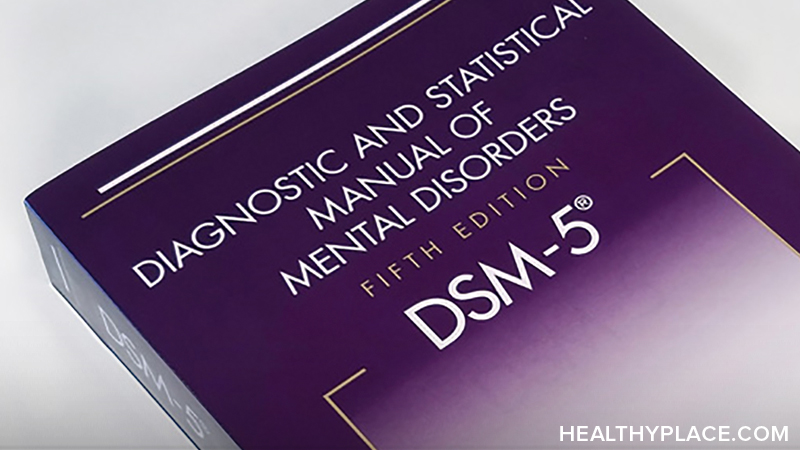Dissociative Identity Disorder (DID) DSM-5 Criteria

The criteria for a dissociative identity disorder (DID) diagnosis are defined in the Diagnostic and Statistical Manual of Mental Disorder, Fifth Edition (DSM-5). The DSM-5 is what doctors use as an authoritative reference when diagnosing patients with dissociative identity disorder. There are five DSM-5 criteria for dissociative identity disorder.
Criteria for Dissociative Identity Disorder in the DSM-5
The first DID criteria is:
1. Two or more distinct identities or personality states are present, each with its own relatively enduring pattern of perceiving, relating to and thinking about the environment and self.
According to the DSM-5, personality states may be seen as an "experience of possession." These states "involve(s) a marked discontinuity in sense of self and sense of agency, accompanied by related alterations in affect, behavior, consciousness, memory, perception, cognition, and/or sensory-motor functioning. These signs and symptoms may be observed by others or reported by the individual." (Read about dissociative identity disorder alters)
One important change from the fourth to the fifth edition of the DSM is that individuals may now report their perception of personality shifts rather than limiting diagnosis to shifts that others must report.
The second dissociative identity disorder criterion in the DSM-5 is:
2. Amnesia must occur, defined as gaps in the recall of everyday events, important personal information and/or traumatic events. (Dissociative Amnesia: Deeply Buried Memories) This criteria for DID newly recognize that amnesia doesn't just occur for traumatic events but, rather, everyday events, too.
3. The person must be distressed by the disorder or have trouble functioning in one or more major life areas because of the disorder. This criterion is common among all serious mental illness diagnoses as a diagnosis is not appropriate where the symptoms do not create distress and/or trouble functioning.
4. The disturbance is not part of normal cultural or religious practices. This DID criterion is to eliminate diagnosis in cultures or situations where multiplicity is appropriate. An example of this is in children where an imaginary friend is not necessarily indicative of mental illness.
5. The symptoms are not due to the direct physiological effects of a substance (such as blackouts or chaotic behavior during alcohol intoxication) or a general medical condition (such as complex partial seizures). This characteristic of dissociative identity disorder is important as substance abuse or another medical condition is more appropriate to diagnose, when present, than DID.
While these are the five, recognized, dissociative identity disorder DSM-5 symptoms, please see our article for the additional signs of DID, which are numerous.
APA Reference
Tracy, N.
(2022, January 4). Dissociative Identity Disorder (DID) DSM-5 Criteria, HealthyPlace. Retrieved
on 2025, December 27 from https://www.healthyplace.com/abuse/dissociative-identity-disorder/dissociative-identity-disorder-did-dsm-5-criteria



